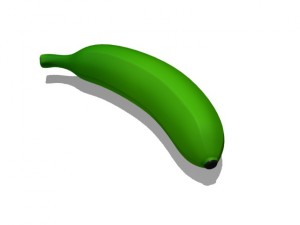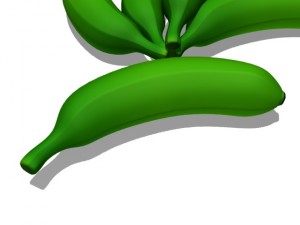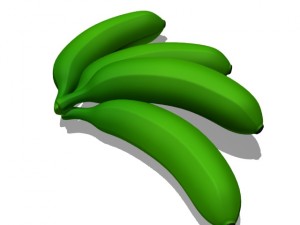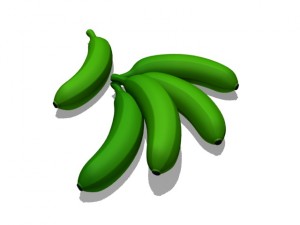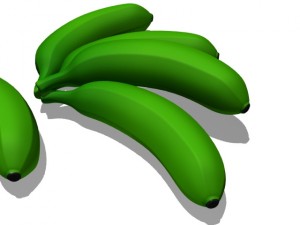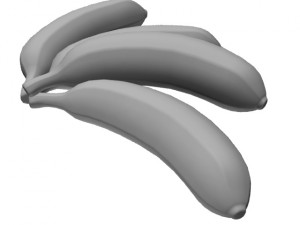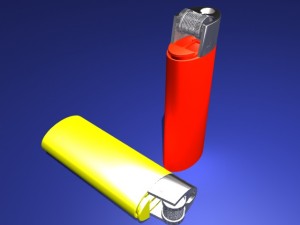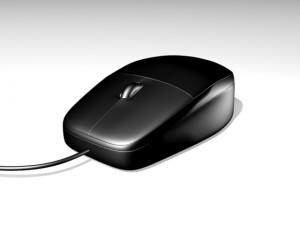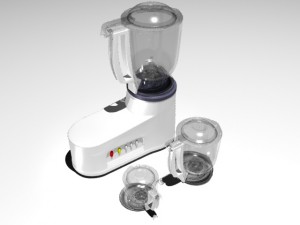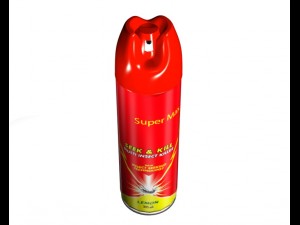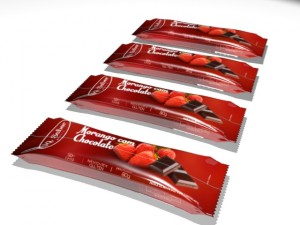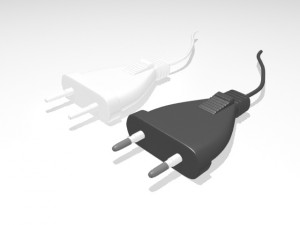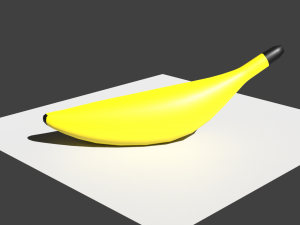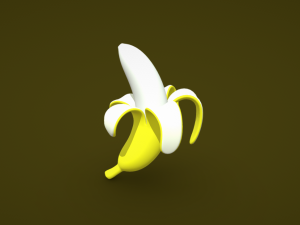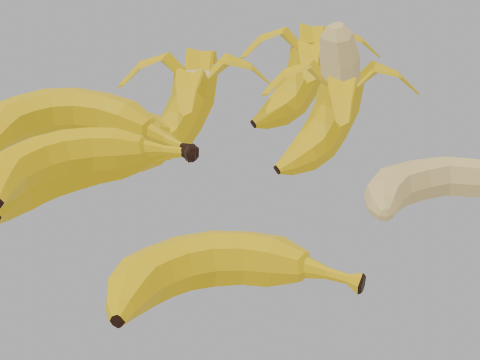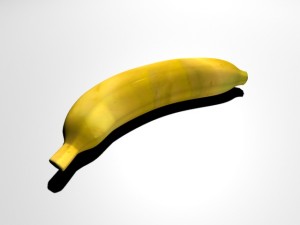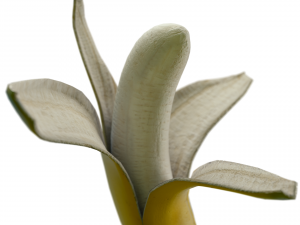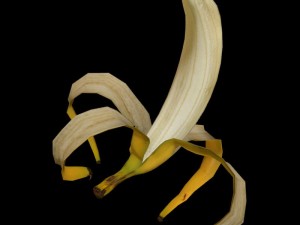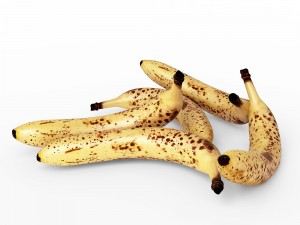green banana Low-poly 3D Modell

BLACK FRIDAY
Early Access 50% OFF
$
5.00 USD
onclick="showLoginForm('Login');return false; ga('send', {'hitType': 'event', 'eventCategory': 'ShoppingCart', 'eventAction': 'checkout', 'eventLabel': 'CheckoutCredit' });"> Kaufen mit Credits
Sie haben $0.00 Credits. Credits kaufen
- Fordern Sie Produktunterstützung
- Verfügbare Formate:
- Artikel-ID:159842
- Datum: 2017-08-24
- Polygone:15372
- Eckpunkte:15362
- Animiert:No
- Texturen:No
- Rigged:No
- Materialien:
- Low-poly:
- Sammlung:
- UVW mapping:
- Plugins Used:No
- Druckfertige:No
- 3D Scan:No
- Erwachsene:No
- Geometrie:Polygonal
- Unwrapped UVs:Unknown
- Betrachter:4085
Beschreibung
this is a 3d model of a banana.i created this model in 3ds max 2012.i only used materials and texture.banana is a tasty fruit.banana use of banana chips ,bread,cake,ice-cream fruit salad.
the banana plant is the largest herbaceous flowering plant.[7] all the above-ground parts of a banana plant grow from a structure usually called a "corm".[8] plants are normally tall and fairly sturdy, and are often mistaken for trees, but what appears to be a trunk is actually a "false stem" or pseudostem. bananas grow in a wide variety of soils, as long as the soil is at least 60 cm deep, has good drainage and is not compacted.[9] the leaves of banana plants are composed of a "stalk" (petiole) and a blade (lamina). the base of the petiole widens to form a sheath; the tightly packed sheaths make up the pseudostem, which is all that supports the plant. the edges of the sheath meet when it is first produced, making it tubular. as new growth occurs in the centre of the pseudostem the edges are forced apart.[10] cultivated banana plants vary in height depending on the variety and growing conditions. most are around 5 m (16 ft) tall, with a range from 'dwarf cavendish' plants at around 3 m (10 ft) to 'gros michel' at 7 m (23 ft) or more.[11][12] leaves are spirally arranged and may grow 2.7 metres (8.9 ft) long and 60 cm (2.0 ft) wide.[1] they are easily torn by the wind, resulting in the familiar frond look.[13]
when a banana plant is mature, the corm stops producing new leaves and begins to form a flower spike or inflorescence. a stem develops which grows up inside the pseudostem, carrying the immature inflorescence until eventually it emerges at the top.[14] each pseudostem normally produces a single inflorescence, also known as the "banana heart". (more are sometimes produced; an exceptional plant in the philippines produced five.[15]) after fruiting, the pseudostem dies, but offshoots will normally have developed from the base, so that the plant as a whole is perennial. in the plantation system of cultivation, only one of the offshoots will be allowed to develop in order to maintain spacing.[16] the inflorescence contains many bracts (sometimes incorrectly referred to as petals) between rows of flowers. the female flowers (which can develop into fruit) appear in rows further up the stem (closer to the leaves) from the rows of male flowers. the ovary is inferior, meaning that the tiny petals and other flower parts appear at the tip of the ovary.[17]
the banana fruits develop from the banana heart, in a large hanging cluster, made up of tiers (called "hands"), with up to 20 fruit to a tier. the hanging cluster is known as a bunch, comprising 3–20 tiers, or commercially as a "banana stem", and can weigh 30–50 kilograms (66–110 lb). individual banana fruits (commonly known as a banana or "finger") average 125 grams (0.276 lb), of which approximately 75% is water and 25% dry matter (nutrient table, lower right).
the fruit has been described as a "leathery berry".[18] there is a protective outer layer (a peel or skin) with numerous long, thin strings (the phloem bundles), which run lengthwise between the skin and the edible inner portion. the inner part of the common yellow dessert variety can be split lengthwise into three sections that correspond to the inner portions of the three carpels by manually deforming the unopened fruit.[19] in cultivated varieties, the seeds are diminished nearly to non-existence; their remnants are tiny black specks in the interior of the fruit Druckfertige: Nein
Sie brauchen mehr Formate?
Falls Sie ein anderes Format benötigen, eröffnen Sie bitte ein neues Support-Ticket und fragen Sie danach. Wir können 3D Modelle in folgende Formate konvertieren: .stl, .c4d, .obj, .fbx, .ma/.mb, .3ds, .3dm, .dxf/.dwg, .max. .blend, .skp, .glb. Kostenlose FormatkonvertierungWir konvertieren keine 3D Szenen und Formate wie .step, .iges, .stp, .sldprt usw!
Nutzungsinformationen
green banana - Sie können dieses lizenzfreie 3D Modell gemäß der Basis- oder erweiterten Lizenz sowohl für private als auch für kommerzielle Zwecke verwenden.Die Basislizenz deckt die meisten Standardanwendungsfälle ab, darunter digitale Werbung, Design- und Visualisierungsprojekte, Social-Media-Konten von Unternehmen, native Apps, Web-Apps, Videospiele sowie physische oder digitale Endprodukte (sowohl kostenlos als auch kostenpflichtig).
Die Erweiterte Lizenz umfasst alle unter der Basislizenz gewährten Rechte ohne Nutzungsbeschränkungen und ermöglicht die Verwendung des 3D Modells in unbegrenzten kommerziellen Projekten unter Lizenzgebührenfreiheit.
Mehr lesen
Bieten Sie eine Geld-zurück-Garantie?
Ja, tun wir. Wenn Sie ein Produkt erworben haben und einen Fehler in den Rendern oder der Beschreibung finden, werden wir versuchen das Problem so bad wie möglich zu beheben. Wenn wir den Fehler nicht beheben können, stornieren wir Ihre Bestellung und Sie bekommen Ihr Geld innerhalb von 24 Stunden nach dem Download des Artikels zurück. . Lesen Sie weitere Bedingungen hierStichworte
Zufällige Artikel des Autors
Es gibt keine Kommentare zu diesem Artikel.


 English
English Español
Español Deutsch
Deutsch 日本語
日本語 Polska
Polska Français
Français 中國
中國 한국의
한국의 Українська
Українська Italiano
Italiano Nederlands
Nederlands Türkçe
Türkçe Português
Português Bahasa Indonesia
Bahasa Indonesia Русский
Русский हिंदी
हिंदी